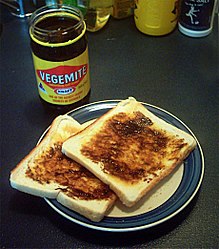Australia's
Culture
The culture of Australia is a western culture,
fairly similar to Canada’s, but there are many different things that make
Australia’s culture all its own.
| St Mary's Cathedral, the largest Roman Catholic church in Australia |
Christianity is the main religion in Australia,
primarily the Anglican and Roman Catholic faiths. But due to the extensive
immigration in Australia, the country is one of the world’s most religiously
diverse nations. There are a great number of Muslims, Buddhists, Jews and
Hindus, but nearly all faiths are present as well.
| Pavlova, such as this one, is usually topped with whipped cream and fruit - strawberries and kiwis here |
As far as food goes, Australian’s eat most of the same food we do in Canada. But like with their religion, Australian cuisine is quite diversified. All the immigrants have influenced the present-day food and cooking styles in Australia. Seafood is very popular in Australia, seeing as many people live by the ocean, and the seafood restaurants in Australia are some of the best in the world. Many different abundant crops grow throughout Australia, for example, bananas, oranges, rice, sugar cane, wheat, etc. Although Australians eat similar foods as us, they still have certain foods that are uniquely their own. Kangaroo meat was once very popular in Australia, but not so much anymore. Vegemite, a food spread made from yeast extract that is salty and slightly bitter, is a common food you would find in Australia. Another is pavlova, a meringue-based dessert with a crisp crust and soft inside. My grandma makes pavlova very often (ever since they discovered it during a trip to Australia) and it's actually one of my favourite desserts!
As far as food goes, Australian’s eat most of the same food we do in Canada. But like with their religion, Australian cuisine is quite diversified. All the immigrants have influenced the present-day food and cooking styles in Australia. Seafood is very popular in Australia, seeing as many people live by the ocean, and the seafood restaurants in Australia are some of the best in the world. Many different abundant crops grow throughout Australia, for example, bananas, oranges, rice, sugar cane, wheat, etc. Although Australians eat similar foods as us, they still have certain foods that are uniquely their own. Kangaroo meat was once very popular in Australia, but not so much anymore. Vegemite, a food spread made from yeast extract that is salty and slightly bitter, is a common food you would find in Australia. Another is pavlova, a meringue-based dessert with a crisp crust and soft inside. My grandma makes pavlova very often (ever since they discovered it during a trip to Australia) and it's actually one of my favourite desserts!
| Surfing the waves, sporting some "surfwear" |
Australians dress basically the same way as we do, however bushwear and surfwear are more commonly worn there. Billabong, Rip Curl and Quiksilver are among the famous surfwear brands people wear in Australia. Ugg boots were first developed in Australia as shoes for comfort, but have evolved into a fashion item, popular wordwide.
http://www.everyculture.com/A-Bo/Australia.html
http://www.foodbycountry.com/Algeria-to-France/Australia.html
